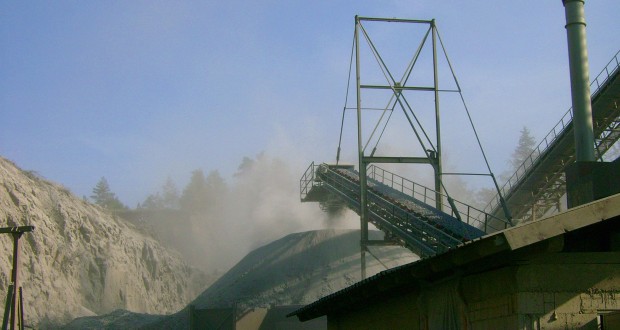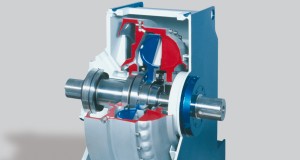Tunnelling operations, opencast mining and bulk materials processing, handling and storage are activities that frequently generate large amounts of dust.
High levels of dust make are also a problem in the waste recycling business. This has an adverse effect on people and on the environment and results in increased wear and tear on machinery and equipment. Those who have to work in dust-laden environments can suffer from heart and circulatory problems, shortness of breath and mucous membrane irritations. Plants growing in such areas will also be affected by deposits of fine dust that will limit or even prohibit natural functions such as photosynthesis. Dust deposits on machines and equipment leads to higher rates of wear and this results in an increased need for maintenance and repair work. Dust is not only bad for the environment and harmful to human health but can also prove extremely life-threatening when a dust explosion occurs. Such events can be effectively counteracted using water sprays. terz GmbH, which is based at Kirchberg/Hunsrück, manufactures the Nebolex atomisation system that uses water-spray technology for dust suppression.
Effective dust binding is based on the principle that dust particles have an affinity for attaching themselves to fine water droplets. This attraction can be used to bind the dust that is generated during material processing and conveying operations. However this can only happen if the water is provided in a form with a sufficiently large surface area. The NEBOLEX system features self-aspirating atomiser heads that break the water down into fine droplets.
The system, which is modular in design and can easily be expanded if required, essentially comprises the following modules: a compressor for creating compressed air, a control and regulating unit and a patented atomiser rail with integrated spray heads.
The control unit allows different sections to be activated as and when required. This is particularly useful when the system is fitted to larger installations where all the different operating components, such as belts and feed hoppers, do not have to be in operation continuously at the same time. All relevant parameters, including material quantities and outside temperature (risk of freezing), are monitored and factored into the operation of the system. Control is by PLC, relays or manual switching.
The atomiser rails can either deliver the water sprays directly on to the material or can be used to create a horizontal or vertical spray curtain. Large pipe cross-sections are used so as to prevent line blockages. This means that the system can run on surface water or cistern water, which only has to be screened prior to use.
Belt transfer points constitute a particular problem area where the dust generating material has to be permeated and the dust fraction humidified. The aim here is to bind the dust as much as possible before it is generated, thereby preventing dust swirls from being created. To achieve this effect the atomiser rails are mounted in such a way that the spray jets are entrained at an angle of about 30° to the downward flow of material.
Where it is not possible to introduce moisture directly into the material the solution is to create a horizontal or vertical curtain of spray. This means that the volatile dust picks up moisture as it passes through the spray barrier and falls to the ground due to its increased weight. This type of system is especially suitable for feeding hoppers, lorry charging points and loading/unloading stations.
If the systems are switched on and off by remote control they can be set to operate for a predefined period or the sprays can be deactivated manually if required. The huge magnification of the water surface results in a water infiltration rate of 1 – 5 ‰, depending on the material being treated. Both types of suppression system can be combined for optimum impact.
If requested, the installations can be fitted with a diagnostic function containing a communication processor and USB link. This means that a record can be kept of function tests on the spray-mist generation at the atomiser heads and leakage tests on the different water supply lines and this information can be transferred to a computer for storage. The diagnostic routine is carried out automatically in conjunction with a PLC system. The diagnostic intervals can be freely selected and adjusted to suit the prevailing conditions. (Terz/Si)
Further information:
Nebolex Umwelttechnik – Terz GmbH

